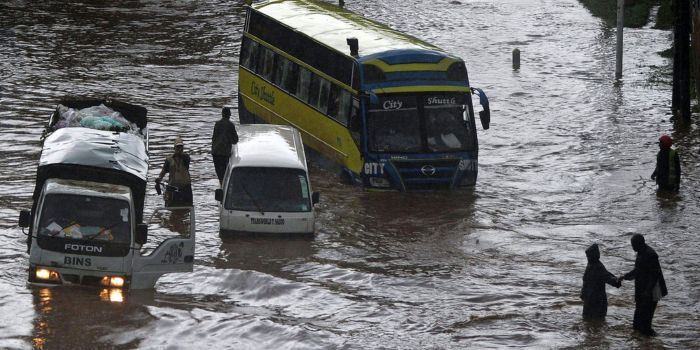Over 500 families have been displaced in Nairobi’s informal settlements following a night of intense rainfall that led to flash floods, home destruction, and loss of life.
Tragedy struck Mathare Phase 4 when a wall collapsed under the pressure of floodwaters, killing three people, including a mother and her two children. While two died on the spot, the third victim succumbed to injuries while en route to the hospital.
In Mukuru Kwa Ruben, one of Nairobi’s most densely populated slums, the situation was equally dire. Floodwaters swept through hundreds of homes, leaving residents with nothing but the clothes on their backs.
Midnight Floods Catch Residents Off Guard
According to several residents, the floods struck in the early hours of the morning, catching families off guard as water gushed into their homes.
“We woke up to water everywhere. We barely managed to rescue the children. Everything else was lost,” said one displaced mother in Mukuru.
Attempts to flee were hampered by high water levels, making it nearly impossible for people to walk or swim to safety. Many were stranded on rooftops and makeshift platforms as the waters continued to rise.
Health and Sanitation Crisis Looms
Residents expressed growing concern over the mix of floodwater and industrial waste, particularly in Mukuru, where toxic runoff from nearby factories and hospitals has contaminated the already overflowing drains.
“The waste comes all the way from KNH and other industrial zones. We are living in sewage,” said James Mwangi Njoroge, a long-time Mukuru resident.
Many blamed Governor Johnson Sakaja’s administration for failing to implement promised drainage and sewerage upgrades, especially after similar disasters last year.
“Every year it’s the same promise, and every year we lose more lives,” Njoroge added.
Lack of Emergency Response Raises Alarm
As of the latest reports, no emergency aid or government assistance had reached Mukuru Kwa Ruben, while rescue efforts were ongoing in Mathare. The Kenya Red Cross and county disaster units had yet to deploy to the hardest-hit zones.
The situation is expected to worsen. David Gikungu, Director of the Kenya Meteorological Department, issued a public warning of continued heavy rainfall from April 22 to April 28, especially in Nairobi, the Central Highlands, Western Kenya, and parts of the Rift Valley.

